Even after exploring the Mayan ruins of Copan in Honduras, Tikal in Guatemala, and Tulum, we were not yet satisfied. Plus, after our visit to Machu Picchu in Peru, we realised we had the possibility to see another one of the seven wonders. So we naturally decided to take our time while travelling to the north of Mexico. On the way, we stopped twice to visit as many ruins: Chichén Itzá and Palenque.
Chichén Itzá: one of the New Seven Wonders of the World
The closest town to Chichén Itzá is Valladolid. It is a good place to stay for the night before discovering the Mayan ruins. From the city you can get to the site using either a colectivo, like we did, or a bus. The archaeological area became famous worldwide after being elected as one of the new seven wonders. The fame it received from this election makes it quite crowded, so you better arrive early. That way you can also avoid the heat, which can be quite intense.
Visiting the ruins
The most famous part of the ruins is the temple of Kukulkan, a pyramid in perfect conditions. The stairs on the northern side present sculptures of feathered snakes. Apparently, if you visit during the equinoxes the shadows give the illusion of the snakes crawling down the temple!
While visiting, we had the impression that most of the people were just stopping at the pyramid and not exploring the rest of the site. Don’t make the same mistake! Otherwise, you will miss other fantastic views, like the biggest ball court of the whole Mesoamerica: 168 by 70 meters!
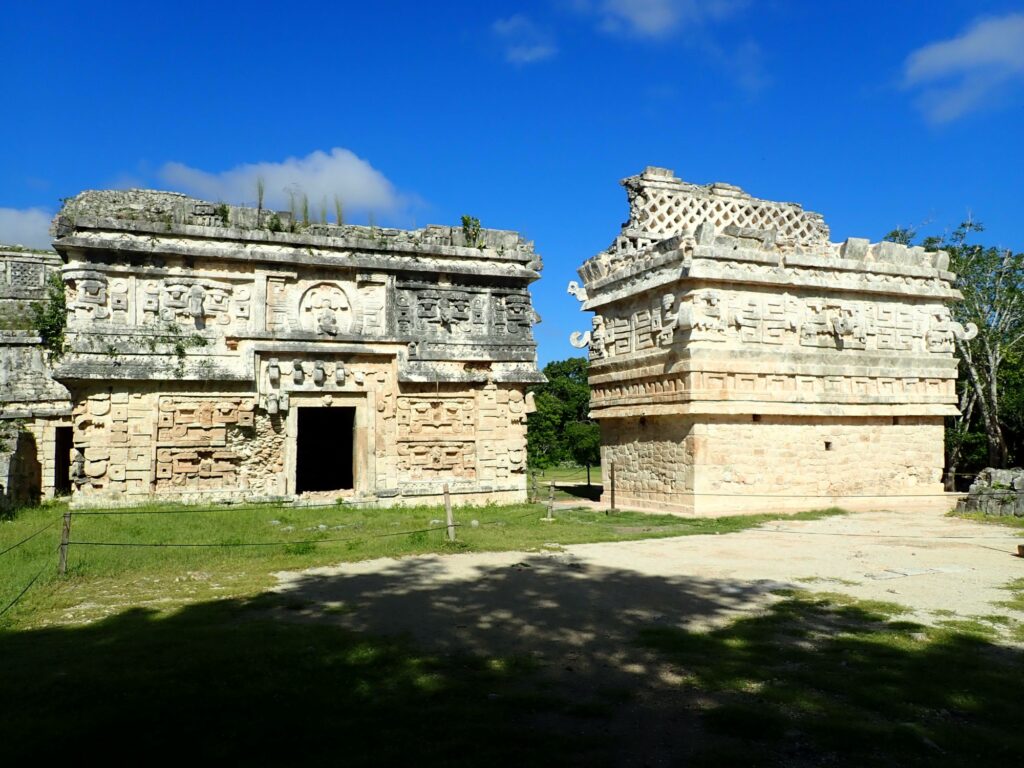
The temple of the warriors also impressed us thanks to its thousand columns. We didn’t actually count them, but we can confirm that they are a lot. Further away from it, you can find the building called Monjas (nuns) and their intricately decorated walls.
While it is the most expensive Mayan site we visited, it is worth the cost. Although, we must confess that the price difference with other ruins is really not proportional to the difference in beauty. We should probably thank the wonder of the world status for that.
A refreshing after-visit
If the heat is too much for you, once left the ruins you have two cenotes waiting for you. The first, and closest, is Ik Kil. It is a well organized space, with a bar, showers, life vests, and hammocks, similar to the Gran Cenote in Tulum. The actual cenote is a very big cave, with plants hanging from the top and almost touching the water.
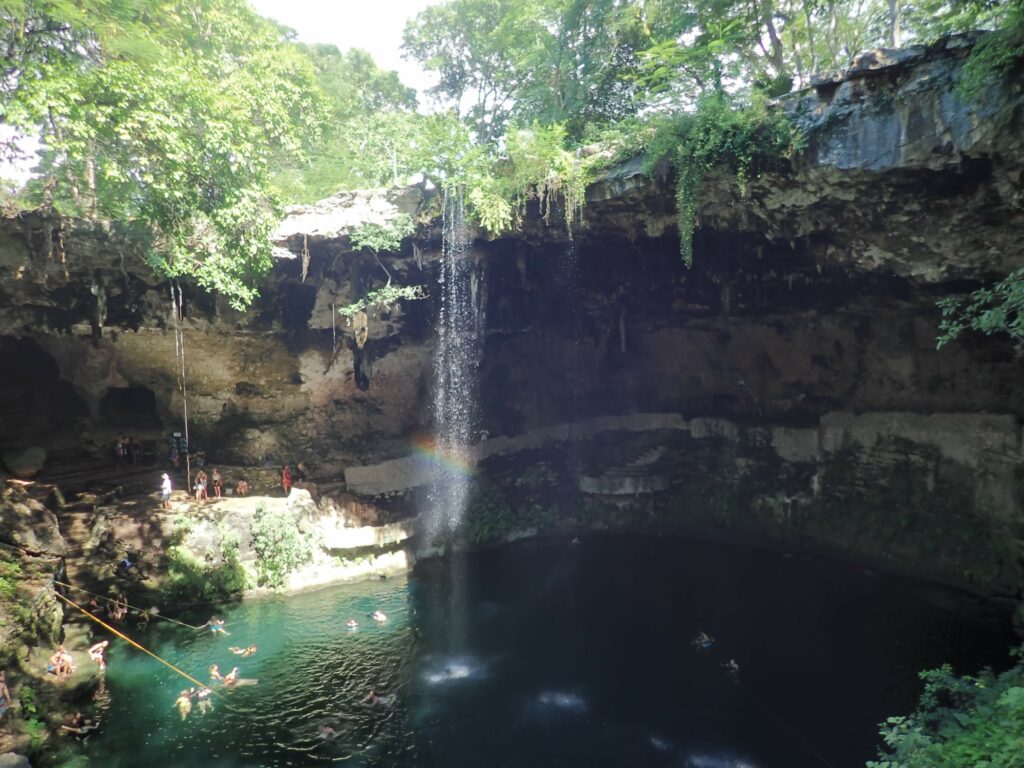
The other cenote is actually in the city center of Valladolid, a typical colonial city center which deserves a visit on its own. The cenote is another big cave, but less touristic compared to Ik Kil, and less expensive as well: there you can find many locals enjoying the fresh water.
Palenque: sleeping in the jungle
The village of Palenque has not much to offer. The best way to enjoy your staying is to sleep at a hotel in the jungle. There are many of them, ranging from basic to ultra luxury. We stayed at the Cabañas Kin Balam, rustic but at a good price, with a swimming pool, and not far from the ruins. A wooden frame, metal roof, mosquito nets for walls, and some curtains for privacy were all that composed our cabaña (hut). That gives you the real feel of sleeping in the nature, while protecting you from annoying insects!
During the night, the jungle was wide awake. Among all the noises we could hear, one stood out the most: loud guttural howls. While they can be weird or unsettling the first time you hear them, they are just some monkey’s way of communication. Howler monkeys are one of the loudest land animal: their howls can sometimes reach up to 5 km. And they did a very good job waking us up.
The jungle ruins
In the morning, you can get to the Mayan ruins by taking a colectivo that passes through the only main road.
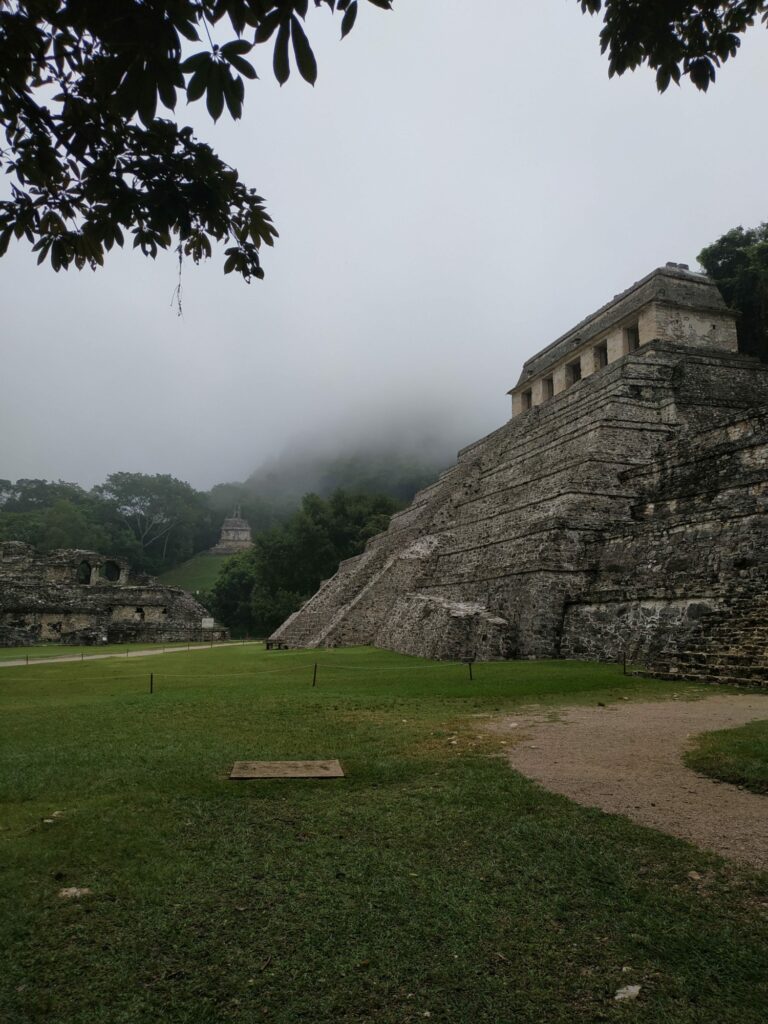
As soon as you enter the site, you dive head first in Mayan history. Several tombs and temples stand alongside the path that brings you further inside the ruins. At the end, you can explore the palace, a group of connected and adjacent buildings. Even if the name might suggest otherwise, nobody was actually living inside it, as it was probably just a bureaucratic building. Further on, you can also mount on some of the temples. When you are on top, take a moment, not only to catch breath, but also to enjoy the view of the buildings coming out of the jungle. While descending, be careful: the steps are uneven and might be slippery!
On the site, drones are forbidden. We actually realized it only when we saw four different guards running towards the two tourists that were hiding behind a wall while flying one. Once caught, they were forced to cancel their recordings.
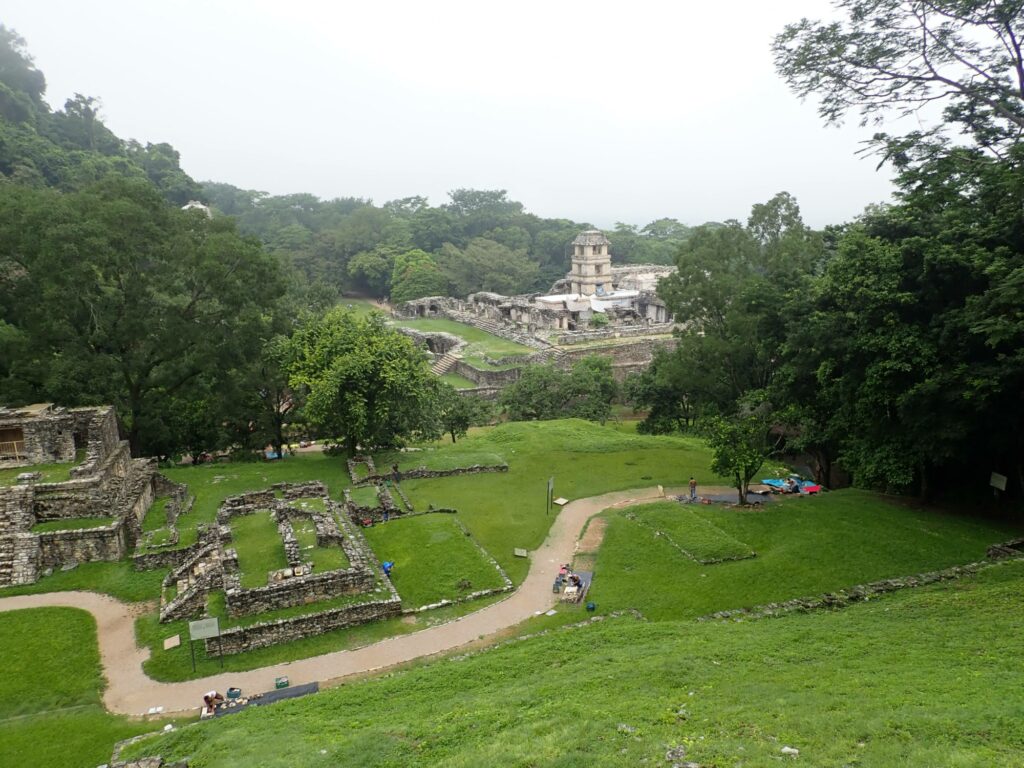
At the end of the visit, don’t miss the museum: it has a lot of pieces and a big replica of the tomb of Pakal. The carved lid of the sarcophagus gave rise to some speculations about Mayan actually being astronauts. Regardless of these more fantastic theories, it is a wonderful sight.
To not miss any of our adventure, subscribe to our newsletter!
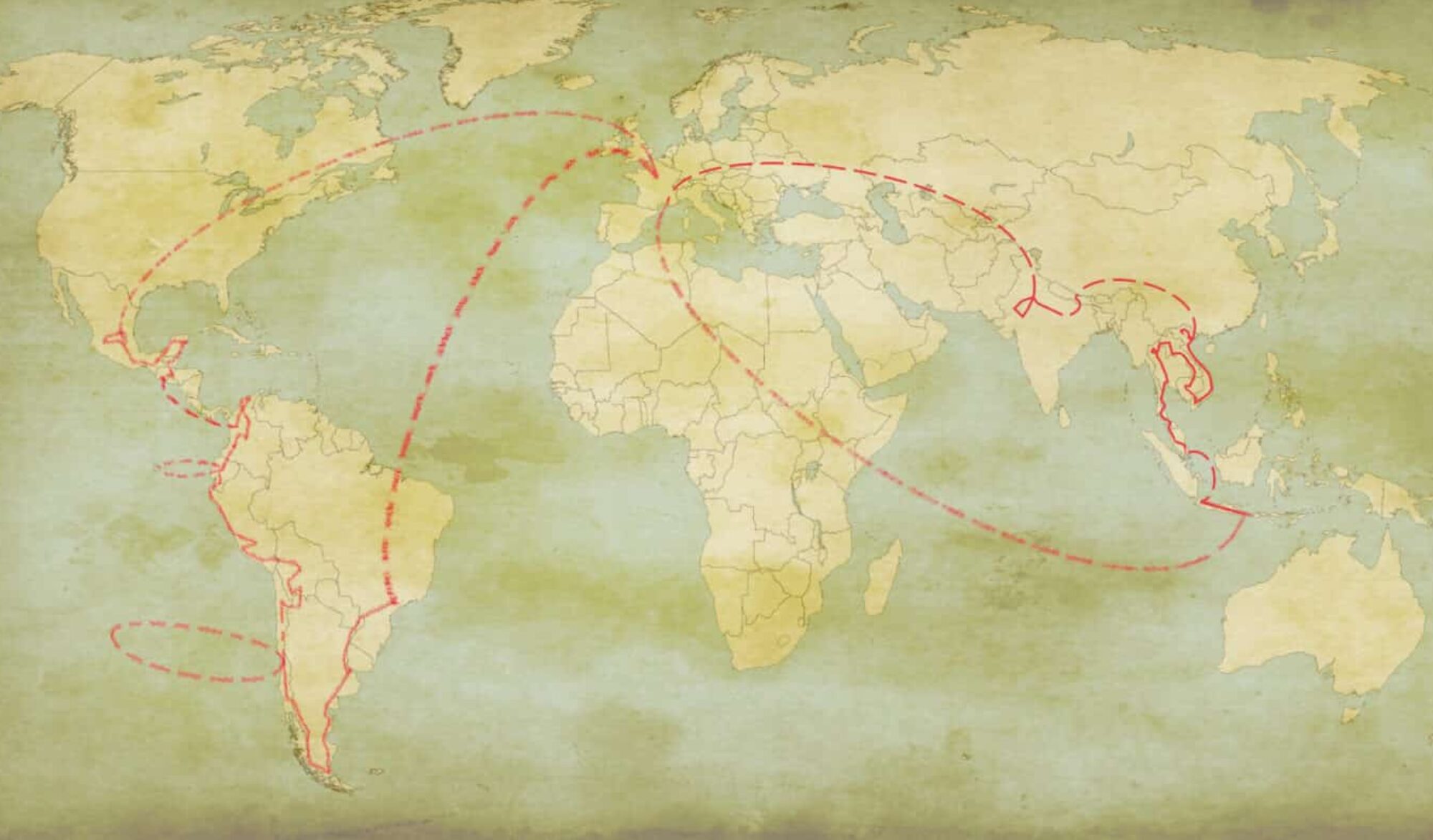

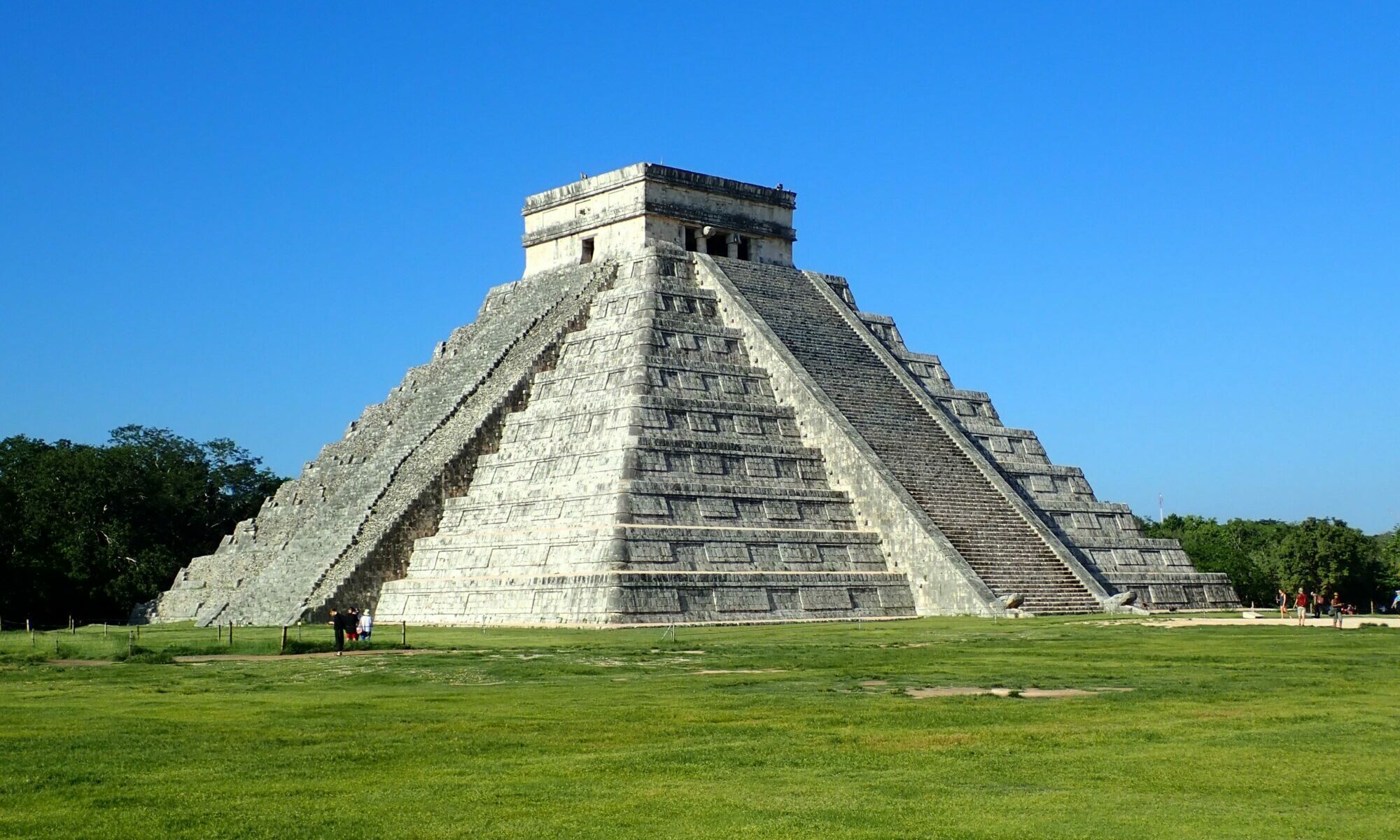
One Reply to “Discovering Mayan ruins in Mexico”